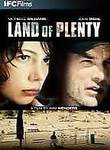 A
AKárzohat (Damnation)
Béla Tarr, writer, director. Hungarian (subtitled)
I saw this film at the Northwest Film Center in Portland, OR, on a recent visit. It was Thanksgiving evening and the whole town was locked down except this one film screening. Lucky me. Actually, about a dozen people eventually showed up to watch it. The movie was released in 1988, but I had never heard of it, or the director. It is a plodding “existential” film, shot in low-contrast black and white. The story is perfunctory: a man is in love with a married cabaret singer and schemes to get her husband put in prison. But that hardly matters. The movie is really about the relentless rain, the dimly lit industrial cityscape; decaying buildings; deserted, muddy streets; packs of feral dogs; smoky bars; laconic conversation and doleful music. There is aggressive omission of anything aesthetic; no pictures, flowers, or sunlight; even human bodies are utilitarian, not beautiful. Can people live like that? Hungary under totalitarian rule is palpably conveyed (this was pre-Wall by a year). A recurring image is water seeping over worn stone walls. It takes a lot to wear down stone, but relentless water can do it. The people are stone-faced, their humanity worn away by life in a lifeless society. I loved the photography, the excruciatingly long takes, the way sound and picture are integrated, the Hungarian music, and the sets. This two hour movie should have been boring, but I found it riveting.









